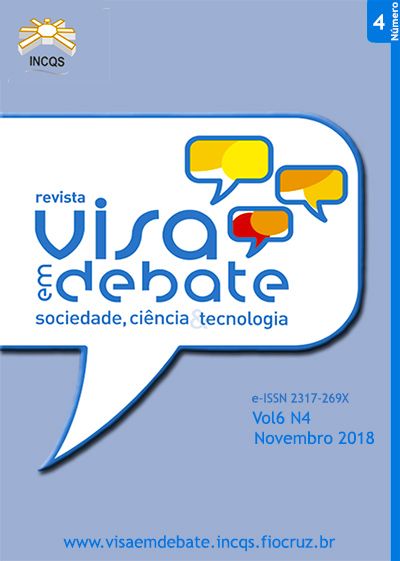Microscopic and molecular identification of foreign matter in food: detection of fraudulent practices Identification of foreign matter: food fraud
DOI:
https://doi.org/10.22239/2317-269X.01152Palavras-chave:
Identificação Microscópica, Identificação Molecular, Matérias Estranhas em Alimentos, Práticas Fraudulentas, Controle de AlimentosResumo
Título PT: Identificação microscópica e molecular de matérias estranhas em alimentos: detecção de práticas fraudulentas
Introdução: Uma das mais frequentes demandas de análise microscópica de alimentos são denúncias de consumidores que encontram matéria estranha macroscópica ou suspeitam da presença de ingredientes não declarados no rótulo do produto. A deteção de subprodutos e matérias estranhas é uma prática fundamental para verificar indiretamente a condição de produção de alimentos. Objetivo: Este estudo relata o processo de identificação microscópica e molecular (PCR) de uma matéria estranha encontrada em um pastel de carne após queixa de um consumidor no município de Itapira, estado de SP, Brasil. Método: Dois procedimentos distintos foram empregados para a identificação da matéria estranha: exame macroscópico seguindo padrões estabelecidos pelo FDA e técnica de reação em cadeia da polimerase (PCR) para identificação do DNA extraído da matéria estranha. Resultados: A análise macroscópica identificou a matéria estranha como sendo papilas gustativas de origem animal, e o teste da PCR confirmou que as mesmas eram de origem bovina. Conclusões: A análise macroscópica e o teste da PCR permitiram a identificação do tipo de matéria estranha e confirmação de sua origem bovina, caracterizando a fraude pelo uso indevido de tecidos inferiores na preparação de pastéis prontos para consumo.
Downloads
Downloads
Publicado
Edição
Seção
Licença
Copyright (c) 2018 Vigilância Sanitária em Debate: Sociedade, Ciência & Tecnologia (Health Surveillance under Debate: Society, Science & Technology) – Visa em Debate

Este trabalho está licenciado sob uma licença Creative Commons Attribution-NonCommercial-NoDerivatives 4.0 International License.
TERMO DE CESSÃO DE DIREITOS AUTORAIS O(s) autor(es) doravante designado(s) CEDENTE, por meio desta, cede e transfere, de forma gratuita, a propriedade dos direitos autorais relativos à OBRA à REVISTA Vigilância Sanitária em Debate: Sociedade, Ciência & Tecnologia (Health Surveillance under Debate: Society, Science & Technology) – Visa em Debate e, representada por FUNDAÇÃO OSWALDO CRUZ, estabelecida na Av. Brasil, nº 4365, Manguinhos, Rio de Janeiro, RJ, Brasil, CEP 21045-900, doravante designada CESSIONÁRIA, nas condições descritas a seguir: 1. O CEDENTE declara que é (são) autor(es) e titular(es) da propriedade dos direitos autorais da OBRA submetida. 2. O CEDENTE declara que a OBRA não infringe direitos autorais e/ou outros direitos de propriedade de terceiros, que a divulgação de imagens (caso as mesmas existam) foi autorizada e que assume integral responsabilidade moral e/ou patrimonial, pelo seu conteúdo, perante terceiros. 3. O CEDENTE cede e transfere todos os direitos autorais relativos à OBRA à CESSIONÁRIA, especialmente os direitos de edição, de publicação, de tradução para outro idioma e de reprodução por qualquer processo ou técnica. A CESSIONÁRIA passa a ser proprietária exclusiva dos direitos referentes à OBRA, sendo vedada qualquer reprodução, total ou parcial, em qualquer outro meio de divulgação, impresso ou eletrônico, sem que haja prévia autorização escrita por parte da CESSIONÁRIA. 4. A cessão é gratuita e, portanto, não haverá qualquer tipo de remuneração pela utilização da OBRA pela CESSIONÁRIA.






